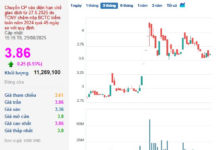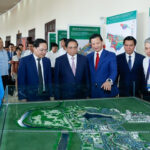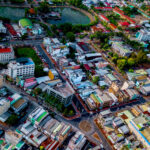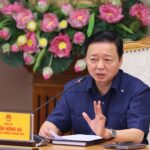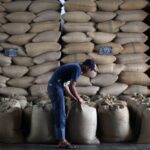The Pineapple Fiber Revolution: Unveiling Vietnam’s Eco-Friendly Textile Innovation
AN ECO-FRIENDLY TEXTILE REVOLUTION
Pineapple fabric, a popular fruit fiber in Southeast Asia, dates back to the 17th century, with the Philippines being its largest producer. However, the intricate process of making pineapple fabric with simple tools limited its production, and its high price made it inaccessible to most. This “luxury fabric” was forgotten as cheap, industrially produced fabrics took over in the 19th century.
The Green Living trend has sparked a startup wave in Southeast Asia, with entrepreneurs seeking to revive pineapple fabric for modern applications. Vietnamese businesses have joined the race to become pioneer producers of pineapple fiber, giving birth to Ananas.
A VIETNAMESE-MADE ECO-TEXTILE
Ananas, named after the scientific name for pineapple, marks a significant milestone as Vietnam successfully produces an eco-textile made from plant-based fibers on a large scale. This achievement means that Vietnamese-made pineapple yarn, fiber, and fabric can now be supplied in bulk to manufacturers and brands in the apparel, fashion, accessories, and furniture industries. The trademark is protected by the Intellectual Property Office.
For the first time, Vietnam has a transparent eco-fiber supply chain, from pineapple leaf harvesting and coarse fiber extraction to yarn production, fiber supply, and distribution of woven fabrics. This success is a result of a strategic collaboration between Ecofa Vietnam, a pineapple fiber production unit, and Bao Lan Textile, a company that provides R&D solutions for the textile and fashion industries.
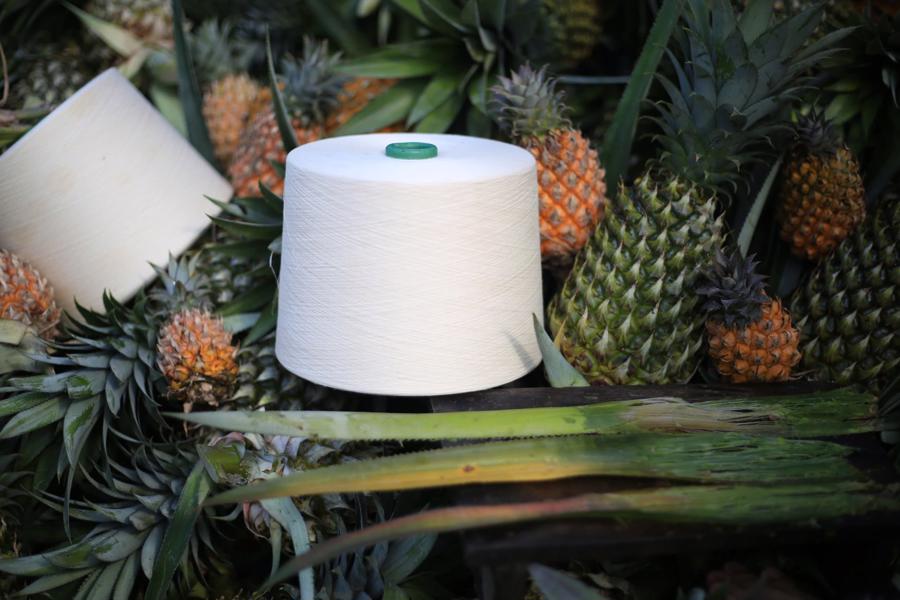
Ananas enhances the perception and trust in Vietnamese materials, meeting the criteria of global fashion brands for choosing suppliers, including transparent supply chains.
“In the context of the domestic and global textile industry’s lack of green production materials, the success of Bao Lan Textile and Ecofa Vietnam in mass-producing high-quality pineapple yarn and fiber is a positive step toward meeting the industry’s needs and promoting its development within and beyond Vietnam’s borders,” said Ms. Nguyen Thi Tuyet Mai, Vice Secretary-General of the Vietnam Textile and Apparel Association (VITAS). “This achievement marks a significant turning point in connecting Vietnam’s pineapple agriculture with the global trend of green fashion.”
For the first time, a fabric that once catered to a privileged few is now accessible to the masses, which is especially significant given the growing demand for eco-friendly fibers in both commercial and contemporary applied fashion.
LARGE-SCALE PRODUCTION SUCCESS
The concept of “turning pineapple plantation byproducts into wearable fabric” is not new. The process involves extracting coarse pineapple fiber (of uniform color and length) from the leaves and then spinning it into yarn (ensuring consistent color, moisture, length, and fineness). At this point, the pineapple yarn can be used for weaving.
The key to success in making pineapple fabric accessible to the general public lies in producing pineapple yarn on a large scale. Hand-spinning long fibers cannot produce enough yarn to meet the demands of industrial weaving mills. Many startups in the region have failed at this stage, but Ecofa Vietnam, leveraging its technical strengths, has succeeded.
By partnering with farmers and cooperatives in Dien Bien, Ninh Binh, Thanh Hoa, Nghe An, and Tien Giang, Ecofa Vietnam sources pineapple leaves and uses a machine invented by its young founder, engineer Dau Van Nam, to produce pineapple yarn. Experiments began in mid-2021, and by early 2024, Ecofa was able to supply 18 tons of pineapple yarn from over one million tons of pineapple leaves harvested monthly. This volume is expected to increase to 50 tons/month by the end of 2025.
“The reason why the natural recycling of pineapple resources after cultivation into useful fibers for the textile industry has not been realized in Vietnam is due to limitations in machinery, equipment, and technology. Ecofa Vietnam has this strength, and we did not want to miss the opportunity to be the first. The large-scale production process of pineapple yarn using machines has been refined over many years of failed experiments,” shared founder Dau Van Nam.
The company believes that larger-scale production will positively impact various aspects, such as creating livelihoods and increasing incomes for farmers, minimizing negative environmental impacts of agricultural byproducts, improving soil health, protecting the subsurface microbial system, and contributing to building a local circular economy.
Ananas boasts four superior features that make it ideal for modern fashion and lifestyle applications: fabric durability, natural odor resistance, natural antibacterial properties, and UV protection of up to 50+ UPF on the yarn.
Two Decades in the Making: Vietnam’s High-Speed Rail Dream of 350 km/h is Finally Within Reach
With the inclusion of the North-South High-Speed Rail Project in the 8th Session of the 15th National Assembly, the dream of traveling at 350 km/h is closer than ever. This ambitious project promises to revolutionize transportation in Vietnam, offering unprecedented speed and efficiency for passengers and freight alike. As we await further developments, the excitement builds for a future where high-speed rail connects the nation, bringing us closer together and opening up a world of possibilities for economic growth and social progress.
Vietnam’s Largest Airport Aims for Substantial Completion by Late 2025, With Potential Metro Access?
This is the largest airport project our country has ever seen. An ambitious, groundbreaking development that will transform travel and connectivity for generations to come. With a vision to create a transport hub like no other, this project promises to be a gateway to the world, offering unparalleled convenience and efficiency. A true milestone in our nation’s history, it will leave a lasting legacy and set a new benchmark for airport design and functionality.



















